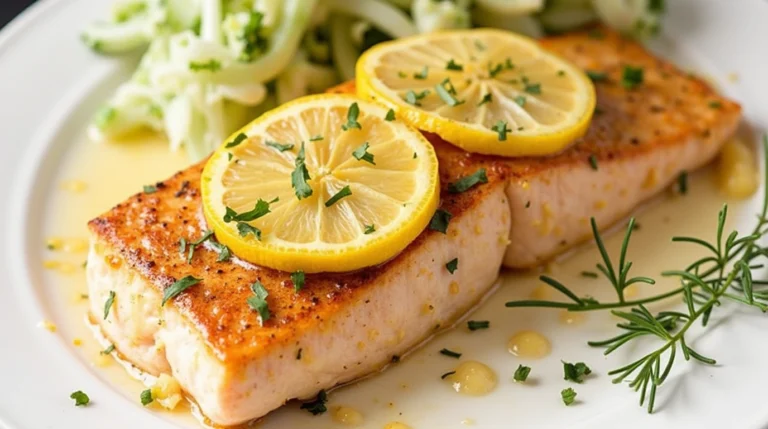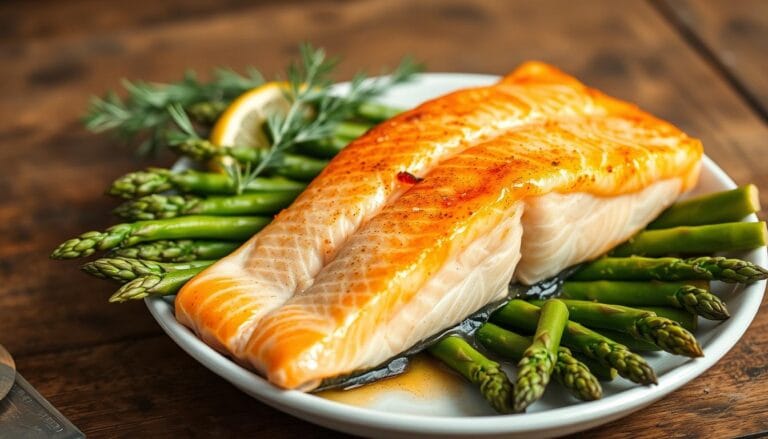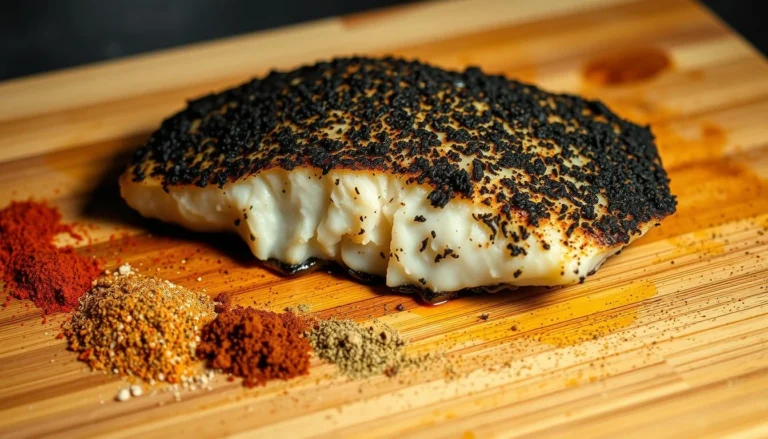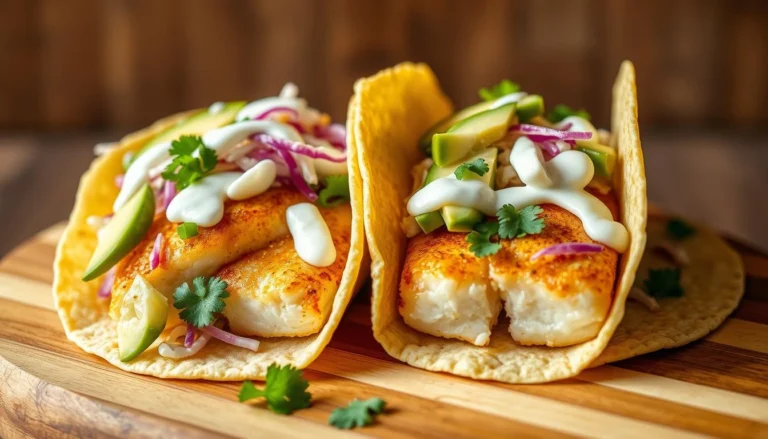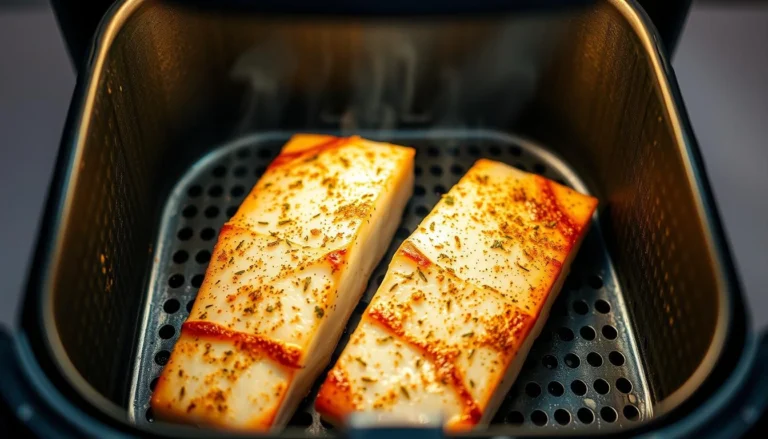Crispy Fried Cod Recipe: Enjoy This Seafood Favorite
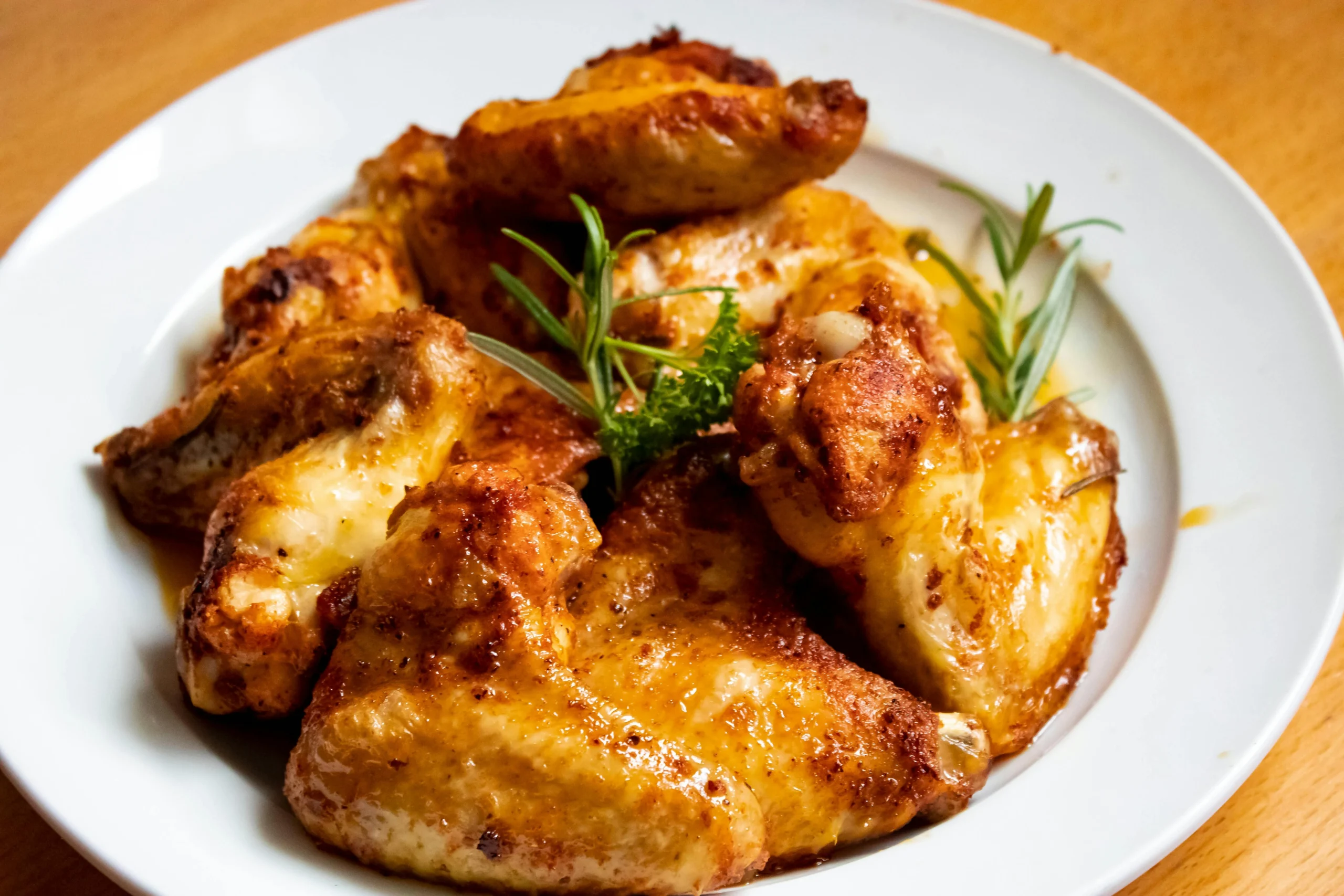
Table of Contents
Welcome to our guide on making the perfect crispy fried cod, a classic dish that’s both easy to prepare and mouth-wateringly good. In this article, we’ll walk you through the process of creating this seafood favorite, from selecting the right cod to serving suggestions.
Our crispy fried cod recipe is designed to bring out the best flavors and textures, making it a great addition to your culinary repertoire. With simple steps and readily available ingredients, you’ll be enjoying this tasty dish in no time.
Key Takeaways
- Learn how to choose the right cod for a perfect fried cod recipe.
- Discover the secrets to achieving a crispy exterior and a tender interior.
- Explore various serving suggestions to complement your crispy fried cod.
- Understand the importance of using fresh ingredients for the best flavor.
- Get tips on how to make your fried cod stand out with simple yet effective techniques.
Introduction to Fried Cod
The allure of fried cod lies in its crispy exterior and tender interior, a combination that’s hard to resist. Fried cod is more than just a meal; it’s an experience that brings people together.
What Makes Fried Cod So Delicious?
Fried cod’s appeal can be attributed to several factors. Firstly, the contrast between the crispy batter and the tender fish creates a delightful texture combination. Secondly, the flavor profile is enhanced by the seasonings used in the batter, which can range from simple salt and pepper to more complex spice blends. To achieve the best fried cod recipe, it’s crucial to balance these elements.
Brief History of Fried Cod Dishes
Fried cod has a rich history that spans across various cultures. Originating as a simple, hearty meal for fishermen, it has evolved into a sophisticated dish enjoyed globally. The traditional British fish and chips, for example, features fried cod as a main component, highlighting its significance in culinary heritage. Understanding how to make fried cod involves appreciating its historical context and the evolution of its preparation methods.
| Dish | Main Ingredient | Batter Type | Frying Oil |
|---|---|---|---|
| Fried Cod | Cod Fillets | Beer Batter | Vegetable Oil |
| Fish and Chips (UK) | Cod or Haddock | Tempura Batter | Lard or Vegetable Oil |
| Japanese Karaage | Chicken or Cod | Potato Starch | Sesame or Vegetable Oil |
In conclusion, fried cod’s popularity stems from its unique texture and flavor, coupled with its rich history and cultural significance. By understanding these aspects, one can appreciate the dish even more and perhaps experiment with new recipes and variations.
Choosing the Right Cod
Selecting the perfect cod for frying is crucial for achieving that crispy exterior and tender interior. The type of cod you choose can significantly impact the final result of your homemade fried cod recipe.
Types of Cod to Use for Frying
There are several types of cod that are suitable for frying, each with its unique characteristics. Some popular options include:
- Atlantic Cod: Known for its flaky texture and mild flavor, making it a great choice for fried cod fillets.
- Pacific Cod: Similar to Atlantic Cod, it has a slightly sweeter taste and firmer texture.
- Cod Fillets: Regardless of the specific type, cod fillets are preferred for frying due to their thickness and uniformity.
According to a study on fish preferences, “Atlantic Cod remains one of the most consumed cod species due to its taste and availability” (
Source: Seafood Nutrition and Health
).
Fresh vs. Frozen Cod: Which to Pick?
The decision between fresh and frozen cod depends on several factors, including availability, budget, and personal preference. Here are some points to consider:
- Fresh Cod: Offers better texture and flavor if handled properly. However, it can be more expensive and has a shorter shelf life.
- Frozen Cod: Is often more affordable and has a longer shelf life. Modern freezing techniques help preserve the quality, making it a viable option for homemade fried cod.
As noted by culinary experts, “Frozen fish can be just as good as fresh if it’s been frozen properly” (
Source: The Kitchn
). Ultimately, the choice between fresh and frozen cod should be based on what’s available and your specific needs.
Essential Ingredients for the Perfect Coating
For a deliciously crispy exterior, understanding the essential ingredients for fried cod is crucial. The coating is what makes fried cod truly special, and in this section, we’ll explore the different types of batter you can use and provide tips on how to season your cod for maximum flavor.
Types of Batter for Fried Cod
The type of batter used can significantly impact the final taste and texture of your fried cod. Here are some popular batter options:
- Beer Batter: Beer batter is a classic choice for fried cod, providing a light, crispy coating with a subtle beer flavor.
- Tempura Batter: Tempura batter is another popular option, known for its delicate, lacy crust that doesn’t overpower the fish.
- Flour Batter: A simple flour batter can be just as effective, especially when seasoned properly.
According to Chef John, “A good batter should be light and crispy, not greasy or heavy.” — Chef John, The Art of Frying
| Batter Type | Characteristics | Best For |
|---|---|---|
| Beer Batter | Light, crispy, subtle beer flavor | Traditional fried cod |
| Tempura Batter | Delicate, lacy crust | Delicate fish flavors |
| Flour Batter | Simple, versatile | Experimenting with seasonings |
Seasoning Your Cod: Tips and Tricks
Seasoning is just as important as the batter itself. Here are some tips for seasoning your cod:
- Keep it Simple: Start with basic seasonings like salt, pepper, and a squeeze of lemon.
- Experiment with Herbs: Herbs like parsley, dill, or thyme can add a fresh flavor.
- Spice it Up: For a bolder flavor, consider adding spices like paprika or cayenne pepper.
As culinary expert,
“The key to a great fried cod is in the balance of flavors. You want your seasoning to complement the fish, not overpower it.”
By combining the right batter with effective seasoning, you can achieve a deliciously crispy and flavorful fried cod that’s sure to impress. Whether you’re going for a classic beer batter or something more innovative, the key is to experiment and find what works best for you.
Preparing the Cod for Frying
To enjoy crispy fried cod, you need to prepare it with care. Preparing your cod correctly is essential for achieving the perfect fried cod. This involves a couple of crucial steps that ensure your cod is not only delicious but also prepared with care.
How to Properly Cut Cod Fillets
When it comes to preparing cod for frying, the first step is to cut your cod fillets properly. Cutting your cod fillets into uniform pieces is crucial. Use a sharp knife to achieve clean cuts, and try to make the fillets as uniform as possible. This ensures that your cod cooks evenly, preventing some parts from being overcooked while others remain undercooked.
Marinating Your Cod for Extra Flavor
After cutting your cod fillets, the next step is to marinate them for extra flavor. Marinating your cod can add an extra layer of flavor. You can use a simple marinade made from ingredients like lemon juice, garlic, and herbs. Make sure to marinate for at least 30 minutes to allow the flavors to penetrate the fish. For a traditional fried cod recipe, consider using a marinade that complements the fish without overpowering it.
By following these steps, you’ll be well on your way to creating a delicious fried cod dish that’s sure to impress. Remember, the key to perfect fried cod is in the preparation.
Best Cooking Oils for Frying Cod
Different cooking oils can significantly impact the taste and healthiness of your fried cod. The right oil can enhance the flavor, texture, and overall quality of your dish. When it comes to frying cod, the choice of oil is not just about health; it’s also about achieving that perfect crispiness and flavor.
The ideal cooking oil for frying cod should have a high smoke point to withstand the frying temperature without breaking down or smoking. Moreover, the flavor of the oil can complement or overpower the delicate taste of cod. Let’s explore the different aspects of cooking oils for frying cod.
Comparing Oils: Flavor and Smoke Point
Various cooking oils have different smoke points and flavor profiles. For instance, avocado oil has a high smoke point and a mild, buttery flavor, making it an excellent choice for frying cod. On the other hand, olive oil, while flavorful, has a relatively lower smoke point and can be too robust for delicate cod.
| Cooking Oil | Smoke Point (°F) | Flavor Profile |
|---|---|---|
| Avocado Oil | 520 | Mild, Buttery |
| Peanut Oil | 450 | Nutty |
| Olive Oil | 320 | Fruity, Robust |
| Grapeseed Oil | 420 | Neutral |
Healthier Alternatives to Traditional Frying Oils
While traditional frying oils like lard and partially hydrogenated oils are still used for their flavor and frying performance, they are not the healthiest options. Healthier alternatives like avocado oil and grapeseed oil offer a better fatty acid profile without compromising on the crispiness of the fried cod.
For those looking for a best fried cod recipe, using a healthier oil can make a significant difference. It’s not just about the oil; it’s also about how you use it. Ensuring the oil is at the right temperature and not overcrowding the frying basket can help achieve that crispy fried cod everyone loves.
The Frying Process: Step-by-Step Guide
The secret to great fried cod lies in the frying process. Achieving the perfect crispiness on the outside while keeping the inside tender requires attention to detail. In this section, we’ll walk you through the steps to fry your cod to perfection.
How to Heat Oil for Frying
Heating the oil to the right temperature is crucial. Use a thermometer to monitor the temperature. For frying cod, the ideal oil temperature is between 350°F and 375°F. If you don’t have a thermometer, you can test the oil by dropping a small piece of batter into it; if it sizzles and rises to the surface, the oil is ready.
It’s also important to choose the right oil. Peanut oil and avocado oil are good options due to their high smoke points and mild flavors.
Frying Temperature: Finding the Sweet Spot
Maintaining the right frying temperature is key to achieving crispy fried cod. If the oil is too hot, the outside will burn before the inside is fully cooked. If it’s too cold, the cod will absorb too much oil and become greasy. Keep the oil between 350°F and 375°F for the best results.
- Preheat the oil to the desired temperature.
- Monitor the temperature closely during frying.
- Adjust the heat as needed to maintain the temperature.
Time: How Long to Fry Your Cod
The frying time will depend on the thickness of your cod fillets. A general rule is to fry for 3-4 minutes per side or until the cod reaches a golden brown color and flakes easily with a fork.
| Cod Thickness | Frying Time |
|---|---|
| 1/2 inch | 3-4 minutes total |
| 1 inch | 5-6 minutes total |
By following these steps and guidelines, you’ll be able to achieve perfectly fried cod that’s crispy on the outside and tender on the inside. Practice makes perfect, so don’t be discouraged if it takes a few attempts to get it just right.
Serving Suggestions for Fried Cod
To truly enjoy fried cod, consider what you serve alongside it. The right accompaniments can elevate the dish from good to great.
Classic Sides to Pair with Fried Cod
When it comes to pairing sides with fried cod, there are several classic options that never go out of style. These include:
- Coleslaw: A creamy coleslaw made with shredded cabbage, mayonnaise, and a hint of vinegar provides a nice contrast to the crispy fried cod.
- Hushpuppies: These deep-fried cornbread balls are a traditional Southern side dish that complements fried cod perfectly.
- French Fries: For a more casual, comfort food-inspired meal, serving fried cod with crispy French fries is a winning combination.
- Malt Vinegar Coleslaw: A tangy slaw made with malt vinegar adds a nice zing to the richness of the fried cod.
| Side Dish | Description | Pairing Reason |
|---|---|---|
| Coleslaw | Creamy shredded cabbage | Contrasting texture and flavor |
| Hushpuppies | Deep-fried cornbread balls | Traditional Southern pairing |
| French Fries | Crispy fried potatoes | Comfort food combination |
| Malt Vinegar Coleslaw | Tangy slaw with malt vinegar | Adds a nice zing to richness |
Creative Sauces to Compliment Your Dish
While traditional tartar sauce is always a good choice, there are many other creative sauces you can serve with fried cod to add an extra layer of flavor. Some ideas include:
- Garlic Aioli: A rich and creamy aioli infused with garlic can add a depth of flavor to your fried cod.
- Lemon-Dill Sauce: A bright and citrusy sauce made with lemon juice and fresh dill can provide a nice contrast to the richness of the fried fish.
- Spicy Remoulade: For those who like a bit of heat, a spicy remoulade sauce can add an exciting dimension to your dish.
Experimenting with different sides and sauces can help you find the perfect combination to suit your taste preferences. Whether you stick with classic pairings or venture into more creative options, the key is to have fun and enjoy the process of creating a delicious meal.
Storing Leftover Fried Cod
Don’t let leftover fried cod go to waste; learn how to store and reheat it like a pro. When you’ve cooked up a batch of delicious fried cod recipe, it’s great to have leftovers, but it’s crucial to store them properly to maintain the dish’s signature crispiness and flavor.
Best Practices for Storing
To keep your leftover traditional fried cod fresh, it’s essential to cool it down to room temperature before storing it. This prevents moisture buildup, which can make the cod soggy. Once cooled, place the cod in an airtight container, making sure not to overcrowd it. You can store it in the refrigerator for up to 2 days.
For longer storage, consider freezing. Wrap the cooled cod tightly in plastic wrap or aluminum foil and place it in a freezer-safe bag. Frozen fried cod can be stored for up to 3 months. When you’re ready to eat it, simply thaw it overnight in the refrigerator.
Reheating Fried Cod Without Losing Crispiness
Reheating fried cod can be tricky, but there are a few methods to retain its crispiness. The oven method is highly recommended. Preheat your oven to 375°F (190°C), place the cod on a baking sheet lined with parchment paper, and bake for about 10-12 minutes, or until heated through and crispy.
Alternatively, you can reheat fried cod in a skillet. Use a small amount of oil over medium heat, and cook the cod for a few minutes on each side until it’s crispy and hot. Avoid microwaving, as it can make the cod rubbery and lose its crispiness.
Dietary Variations for Fried Cod
Making fried cod work for different diets is a culinary challenge worth taking. As more people adopt specific dietary lifestyles, adapting classic recipes like fried cod becomes essential. Whether you’re catering to gluten-free requirements or looking for healthier cooking alternatives, there’s a way to enjoy crispy fried cod that suits everyone’s needs.
Gluten-Free Options for the Batter
For those who require a gluten-free diet, traditional wheat flour is not an option. Fortunately, there are several alternatives that can provide a similarly crispy coating for your fried cod recipe. Consider using rice flour, corn flour, or almond flour as substitutes. “Using gluten-free flours can be a bit tricky, but with the right combination, you can achieve that perfect crispiness,” notes culinary expert, Chef Samantha Jones.
Another approach is to use a gluten-free batter mix available in most supermarkets. These mixes are designed to mimic the texture of traditional batter and can be a convenient option. Experimenting with different gluten-free flours and seasonings can also lead to new flavor discoveries.
Health-Conscious Cooking Methods
While traditional deep-frying is a staple for achieving that crispy exterior, there are healthier alternatives that can still deliver great taste. One method is to use an air fryer, which significantly reduces the amount of oil needed. Another is to opt for pan-frying with a small amount of heart-healthy oil, such as avocado oil, which has a high smoke point.
Baking is another health-conscious method that can produce a satisfying crunch. By coating the cod in a gluten-free breadcrumb mixture and baking it in the oven, you can achieve a crispy exterior without deep-frying. As renowned chef, Mark Smith, puts it, “Baking can be just as effective as frying if done correctly, and it’s a much healthier option.”
To further enhance the healthiness of your fried cod recipe, consider using sustainable and responsibly sourced cod. This not only supports environmental causes but can also result in a better-tasting dish.
Common Mistakes to Avoid When Frying Cod
Frying cod is an art that requires precision and attention to detail. One of the most critical aspects is avoiding common mistakes that can ruin the dish. By understanding these pitfalls, you can ensure that your fried cod turns out crispy on the outside and tender on the inside.
Overcooking or Undercooking: Finding Balance
One of the most common mistakes when frying cod is overcooking or undercooking it. Overcooking can make the cod dry and tough, while undercooking can leave it raw and unsafe to eat. The ideal cooking time depends on the thickness of the cod fillets and the temperature of the oil.
To achieve perfectly cooked cod, it’s essential to monitor the cooking time and temperature closely. A general rule of thumb is to fry cod for about 3-4 minutes on each side, or until it reaches an internal temperature of 145°F (63°C). Using a thermometer can help you achieve the perfect doneness.
“The secret to great fried cod is not just in the recipe, but in the technique. Paying attention to the little details, like cooking time and temperature, can make all the difference.” – Celebrity Chef,
Skipping the Drying Step: Why It’s Important
Another critical mistake is skipping the drying step before frying. Drying the cod fillets helps the batter adhere better, resulting in a crisper coating. If the cod is not dried properly, the batter may fall off during frying, leading to a greasy and unevenly coated piece of fish.
To dry cod fillets effectively, pat them dry with paper towels on both sides before applying the batter. This simple step can significantly improve the quality of your fried cod.
| Common Mistake | Consequence | Solution |
|---|---|---|
| Overcooking/Undercooking | Dry/Tough or Raw Fish | Monitor Cooking Time and Temperature |
| Skipping Drying Step | Batter Falls Off, Greasy Fish | Pat Dry Cod Fillets Before Battering |
By being aware of these common mistakes and taking steps to avoid them, you can create a delicious and crispy fried cod dish that will impress your family and friends. Remember, practice makes perfect, so don’t be discouraged if it takes a few attempts to get it right.
Conclusion: Enjoy Your Fried Cod
Now that you’ve made it through our comprehensive guide to making crispy fried cod, it’s time to put the final touches on your recipe. With the right techniques and ingredients, you can create delicious homemade fried cod that’s sure to impress.
Tips for Achieving Perfection
To take your fried cod to the next level, focus on using the right type of cod, such as Atlantic or Pacific cod, and make sure to dry the fillets properly before coating. Experiment with different seasonings and batters to find the combination that works best for you.
Experimenting with Flavors
Don’t be afraid to try new flavors and ingredients in your fried cod recipe. Consider adding a twist to your batter with spices or herbs, or serving your fried cod fillets with a side of tangy slaw or creamy tartar sauce. With practice and patience, you’ll be creating mouth-watering homemade fried cod that’s sure to become a favorite.
FAQ
What is the best type of cod to use for fried cod?
The best type of cod to use for fried cod is typically a mild-flavored, flaky cod such as Atlantic cod or Pacific cod. These varieties hold up well to the frying process and yield a tender, flaky interior.
Can I use frozen cod for fried cod, or does it have to be fresh?
You can use either fresh or frozen cod for fried cod. However, if using frozen cod, make sure to thaw it properly and pat it dry before frying to achieve the best results.
How do I achieve a crispy coating on my fried cod?
To achieve a crispy coating, ensure that your cod is dry before dredging it in the batter or coating. Using the right type of batter or coating, such as a beer batter or a light dusting of flour, can also help. Frying at the correct temperature is crucial as well.
What are some common mistakes to avoid when frying cod?
Common mistakes to avoid include overcooking or undercooking the cod, not drying the cod properly before frying, and not maintaining the correct oil temperature. These mistakes can lead to a less-than-desirable texture and flavor.
How do I store leftover fried cod, and how can I reheat it without losing crispiness?
To store leftover fried cod, place it in an airtight container in the refrigerator. To reheat without losing crispiness, consider using the oven or an air fryer instead of microwaving, as these methods help preserve the crispy exterior.
Can I make gluten-free fried cod?
Yes, you can make gluten-free fried cod by using gluten-free flours or batters. There are several gluten-free alternatives available, such as rice flour or cornmeal, that can be used to make a delicious and crispy coating.
What are some healthier alternatives to traditional frying oils?
Healthier alternatives to traditional frying oils include avocado oil, grapeseed oil, and peanut oil. These oils have a higher smoke point and are considered healthier options for frying.
How long should I fry cod fillets?
The frying time for cod fillets can vary depending on their thickness and the temperature of the oil. Generally, cod fillets are done when they are golden brown and flake easily with a fork, usually within 3-5 minutes per side.
What are some creative sauces that complement fried cod well?
Some creative sauces that complement fried cod include tartar sauce, malt vinegar aioli, and a spicy remoulade. These sauces add a tangy, creamy, or spicy kick that enhances the flavor of the fried cod.
Can I make fried cod ahead of time, or is it best served immediately?
While fried cod is best served immediately for optimal crispiness, you can prepare components ahead of time, such as the batter or seasoning. Frying the cod just before serving yields the best results.
There are no reviews yet. Be the first one to write one.

